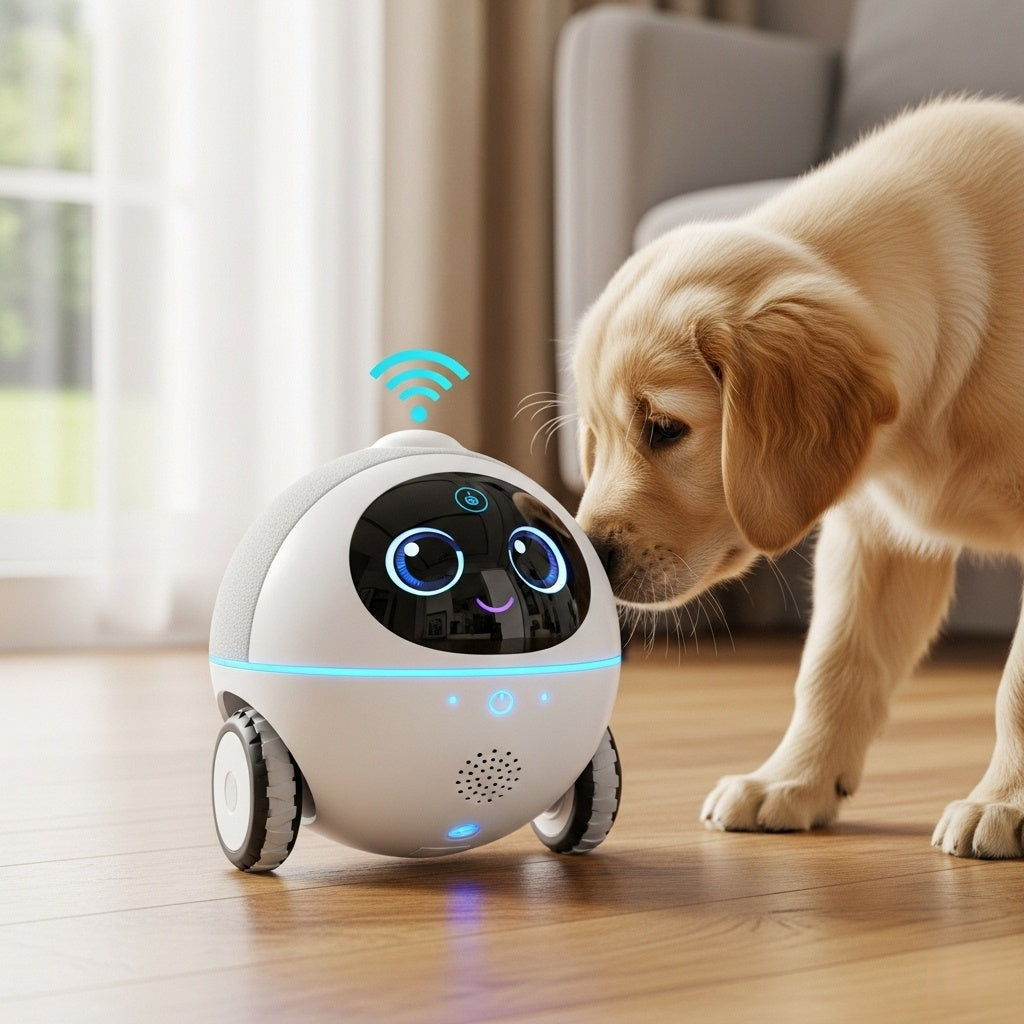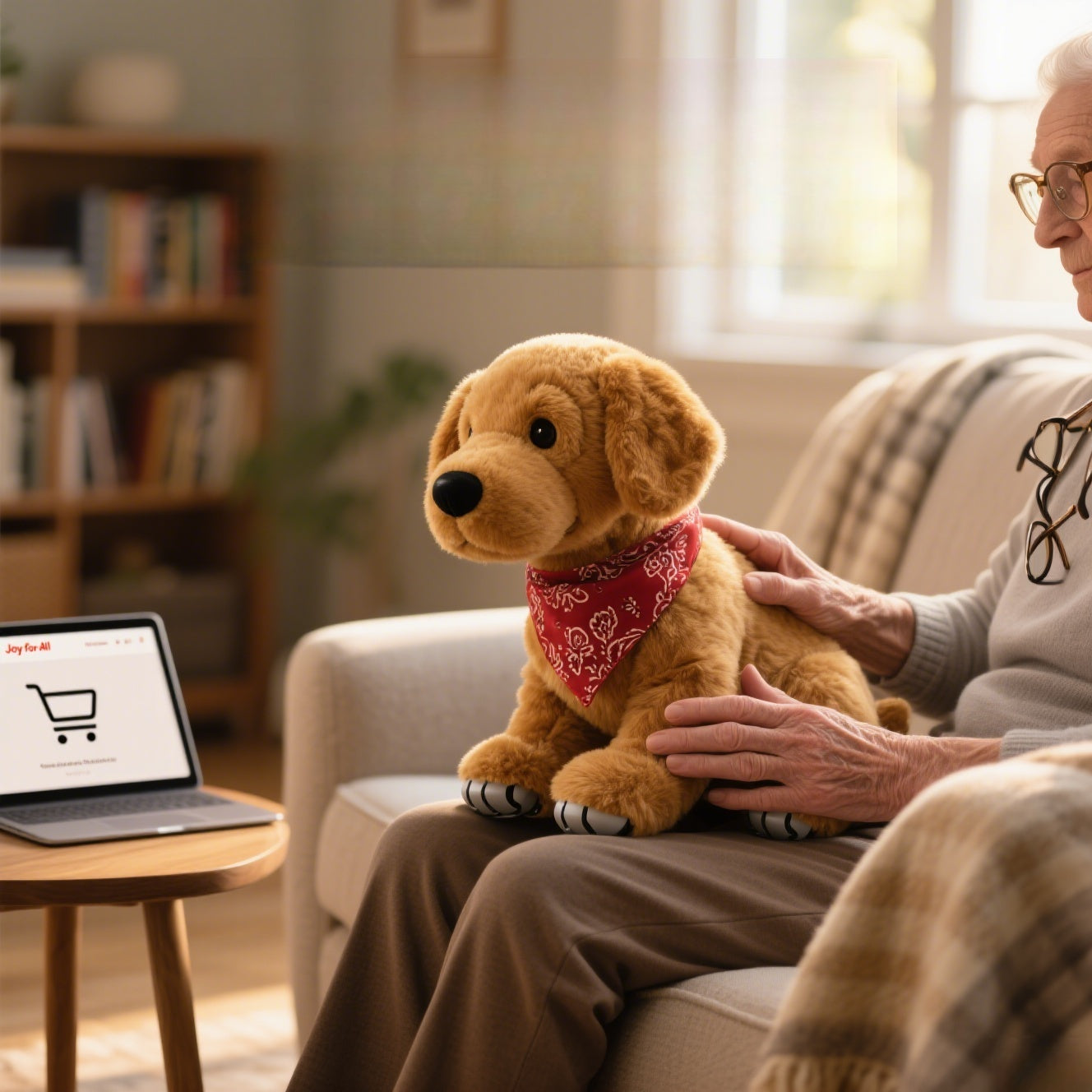
Key Points
-
Research suggests that Joy for All Companion Pets provides a very realistic experience, "hey have soft fur, make gentle sounds, and move in response to touch.
-
These robotic companions are ideal for the elderly, They reduce loneliness, soothe agitation, and liftspirits, particularly for individuals with dementia. Research confirms they support emotional health.
-
These are a top budget-friendly choice for seniors, typically costing between $100 and $200. They are a great option for those who can no longer care for a live animal. However, interaction is limited, they require regular charging, and some users with significant memory loss may not understand what they are.
-
Results are positive in care environments, though each person reacts differently. Some seniors bond deeply with their robotic pet, while others might be unsettled if its movements seem unnatural.
Who Should Consider It?
Quick Pros and Cons
-
Affordable and hygienic alternative to real pets.
-
Reduces stress and promotes positive behaviors, per user testimonials and studies.
-
No feeding, walking, or vet bills.
-
Battery life (uses C batteries) can be short with heavy use.
-
Some find the sounds/mechanics unnatural or fragile.
-
Not suitable for everyone; negative reactions possible in severe dementia cases.
Honest Review: Is the Joy for All Companion Pet Truly Lifelike?
A Gentle Introduction to Robotic Companionship
Key Features: What Makes These Pets Tick?
-
Sensory Responses: Respond to motion, touch, and sound. Gently pet the cat's back, and it purrs with a vibrating mechanism. The dog wags its tail and turns its head toward voices, offering a convincing sense of companionship.
-
Realistic Design: The plush coat feels soft and authentic. While it may not match the density of higher-end brands, the quality remains convincing. Movements appear natural, featuring gentle blinks, slight ear flicks, and subtle paw adjustments. Cats are available as orange tabbies or silver with white mittens. Dogs come in golden or playful freckled styles.
-
Sounds and Movements: The cats make soft meows and purrs, and even mimic paw-licking. Dogs offer gentle barks and a calming heartbeat you can feel when you pet them.
-
Power and Durability: They run on four included C batteries, which last for weeks with normal use. Weighing around four pounds, they are light, easy to move, and perfect for lap use.
-
Maintenance: They require no feeding or walks. Care is simple—just an occasional brushing with the included comb. The fur is hygienic and resists stains, making it practical for use in care facilities.
|
Feature
|
Joy for All Cat
|
Joy for All Dog
|
Competitor (e.g., PARO Seal)
|
|
Price
|
$88-$160
|
$180
|
$5,000+
|
|
Responses
|
Touch, motion, sound
|
Touch, motion, voice
|
Touch, sound, light
|
|
Battery Life
|
2–4 weeks
|
2–4 weeks
|
Rechargeable (hours)
|
|
Weight
|
~4 lbs
|
~4 lbs
|
~6 lbs
|
|
Target Use
|
Dementia therapy
|
Companionship
|
Clinical settings
|
Lifelikeness Under the Microscope
Pros: A Heartwarming Companion
-
Emotional Impact: In robotic pet therapy, these pets excel at evoking affection. Studies, like one from the Journal of Holistic Nursing (2022), show participants with dementia experienced 63% less anxiety and 57% less agitation after interactions. Users report seniors talking to the pets, sleeping with them, and showing increased engagement—mirroring real pet bonds.
-
Lifelike Elements: The fur and sounds are standout features. Amazon reviewers (4.4/5 stars from over 10,000 reviews) note the "lifelike purring" is soothing at night. For those with dementia, the responsive actions can evoke a caregiving response, easing loneliness.
-
Practical Benefits: These companion pets need no feeding or walks. This makes them a practical, low-maintenance comfort for care facilities.
-
Therapeutic Value: Ageless Innovation's research PDF details over 10 projects showing mitigated behavioral issues and potential cognitive improvements. A 2020 VA study echoed this, with robotic pets aiding veterans with dementia by providing "comfort and connection."
Cons: Where Realism Falls Short
-
Limited Interactivity: Movements are repetitive—no walking, fetching, or learning like advanced AI pets. Some Best Buy reviews mention it "freaked me out" due to mechanical sounds.
-
Battery and Durability Issues: Heavy petting drains batteries quickly; panels feel fragile. Negative Amazon feedback (about 10% of reviews) cites short lifespan or malfunction after months.
-
Potential Drawbacks for Dementia: While beneficial, some users with severe dementia mistake them for real, leading to confusion (e.g., trying to "feed" it). A PMC study (2021) notes negative reactions in 10–20% of cases, like disinterest or distress.
-
Overall Realism Score: 7/10. They're lifelike in appearance and basic responses but lack the soulful unpredictability of live animals.
User Experiences: Stories from the Frontlines
However, not all are rave: "Too mechanical for my dad; he ignored it," notes a Walmart reviewer. X (formerly Twitter) posts from 2023–2025 highlight mixed results, with recent ones praising them for post-pandemic isolation relief.

Comparisons: How Do They Stack Up as the Best Robot Pets for Seniors?
-
PARO Seal: More advanced (responds to light), but $6,000+ and clinical-focused. Studies show similar benefits but higher costs.
-
Tombot Puppy: Hyper-realistic for dementia ($400+), with AI learning—better for tech-savvy users but pricier.
-
AIBO by Sony: Entertaining with tricks ($3,000), but less therapy-oriented.
Buying Guide: Tips for Making the Right Choice
-
Assess Needs: For mild dementia, opt for the cat (calmer); for active seniors, the dog.
-
Where to Buy: Amazon for fast shipping; Walmart for in-store pickup.
-
Trial Run: Some facilities offer demos—test responsiveness.
-
Accessories: Extra batteries essential.
-
Warranty: 1-year from Ageless Innovation.
FAQ
Does Joy for All dog walk?
-
Reacting to touch and sound with barks, nuzzles, and tail wags.
-
Blinking eyes and turning its head.
-
A soft, hypoallergenic fur coat.
-
A soothing, noticeable heartbeat when petted.








1 comment
Maureen
I bought my mum who had dementia and was in care, a Joy for All cat. One of the best gifts she could have received. She, an avid, life-long animal lover, was smitten from the start.
I have a few suggestions for improvement. 1) use softer, more realistic material for the coat as touch is so important for those with dementia. I always thought the faux fur was not very soft. 2). Make it so the coat can be completely removed for washing. Over time the cat’s “fur” got dirty and matted. 3) the overall sturdiness of the doll could have been better, especially the limbs which my mum broke over time with being rough and I had to purchase a 2nd car and finally, 4) create a longer lasting battery. I ended up having to buy 4 rechargeables with a charger at an extra cost. My mum did love her kitty, though and I was glad I bought her one.
I bought my mum who had dementia and was in care, a Joy for All cat. One of the best gifts she could have received. She, an avid, life-long animal lover, was smitten from the start.
I have a few suggestions for improvement. 1) use softer, more realistic material for the coat as touch is so important for those with dementia. I always thought the faux fur was not very soft. 2). Make it so the coat can be completely removed for washing. Over time the cat’s “fur” got dirty and matted. 3) the overall sturdiness of the doll could have been better, especially the limbs which my mum broke over time with being rough and I had to purchase a 2nd car and finally, 4) create a longer lasting battery. I ended up having to buy 4 rechargeables with a charger at an extra cost. My mum did love her kitty, though and I was glad I bought her one.